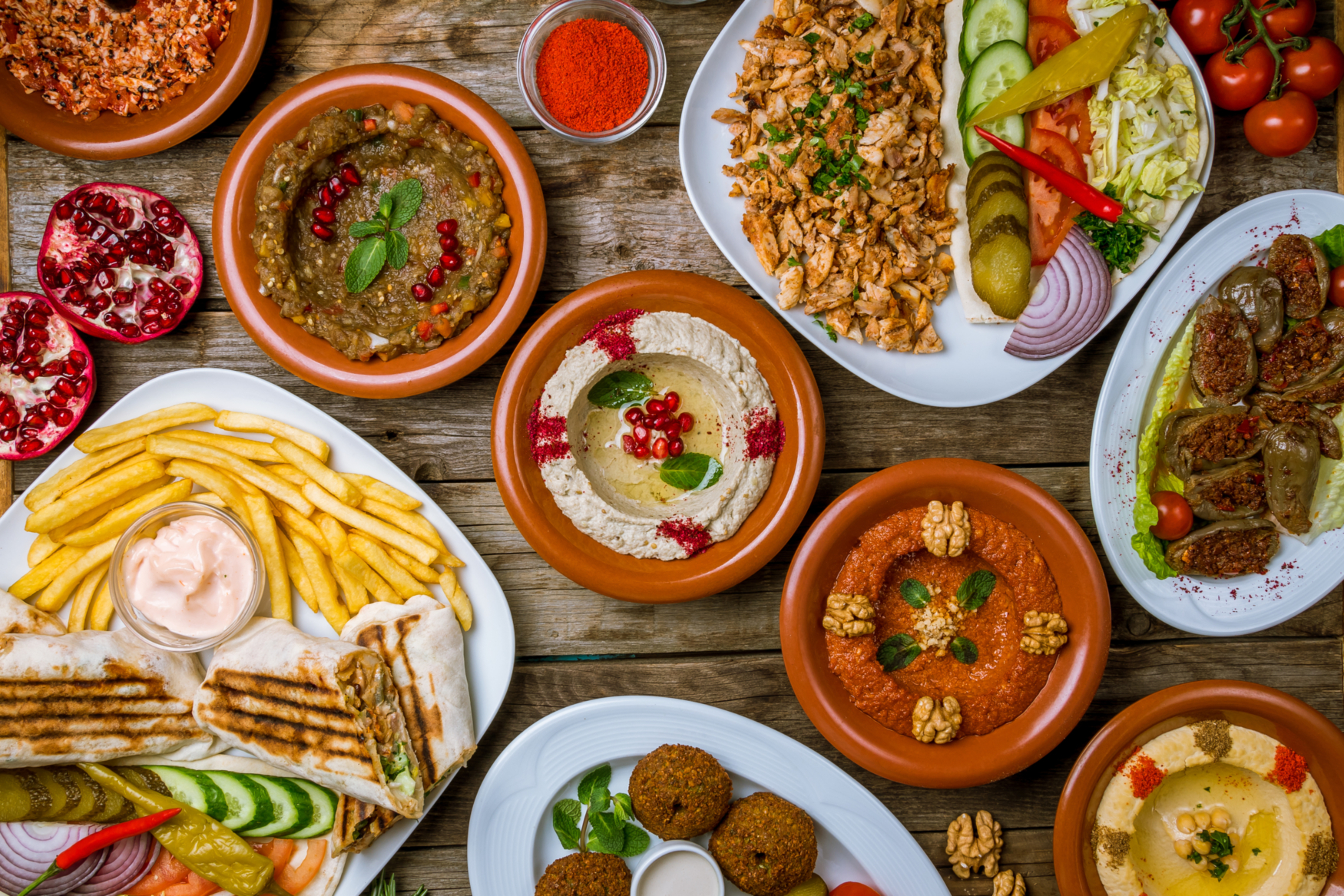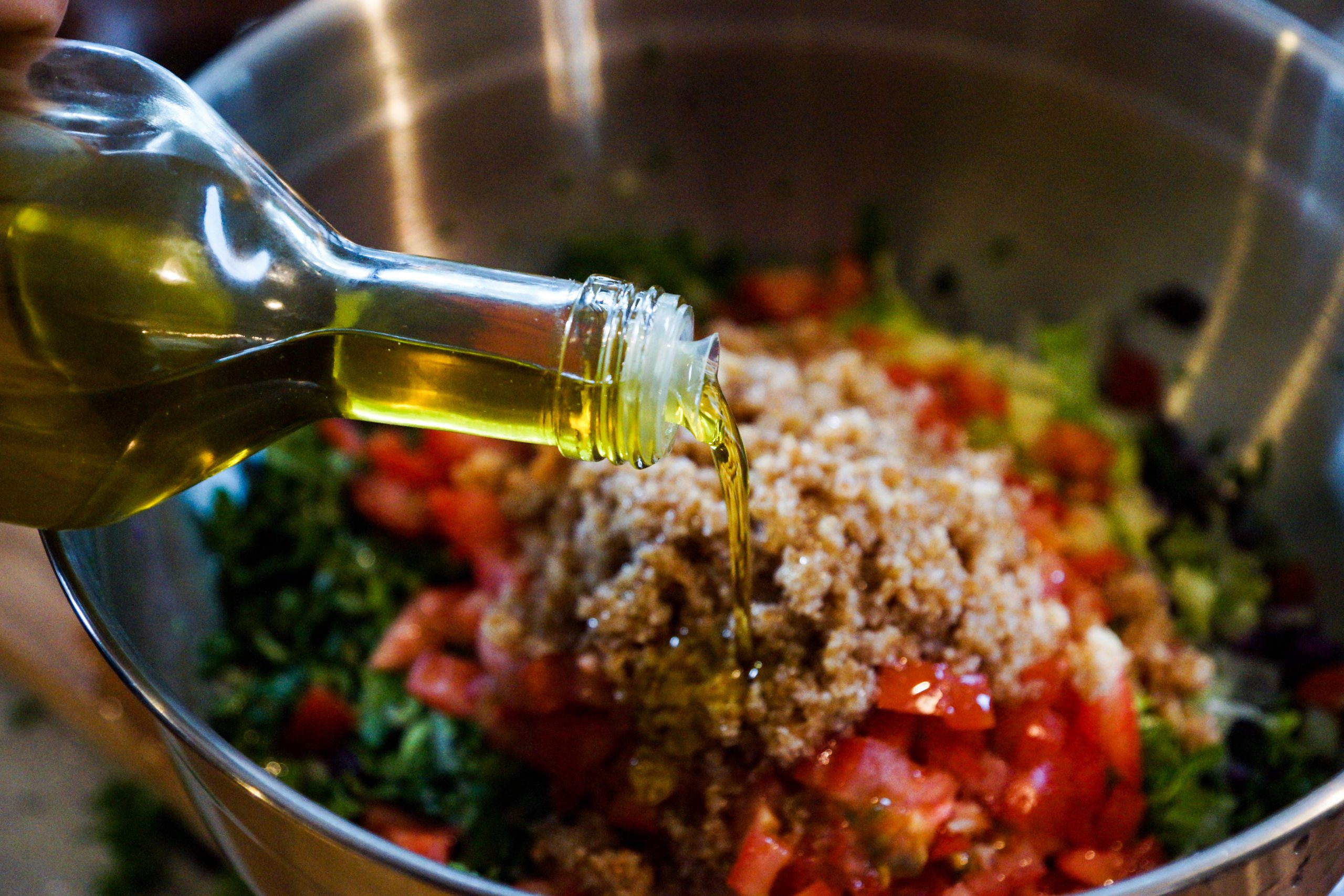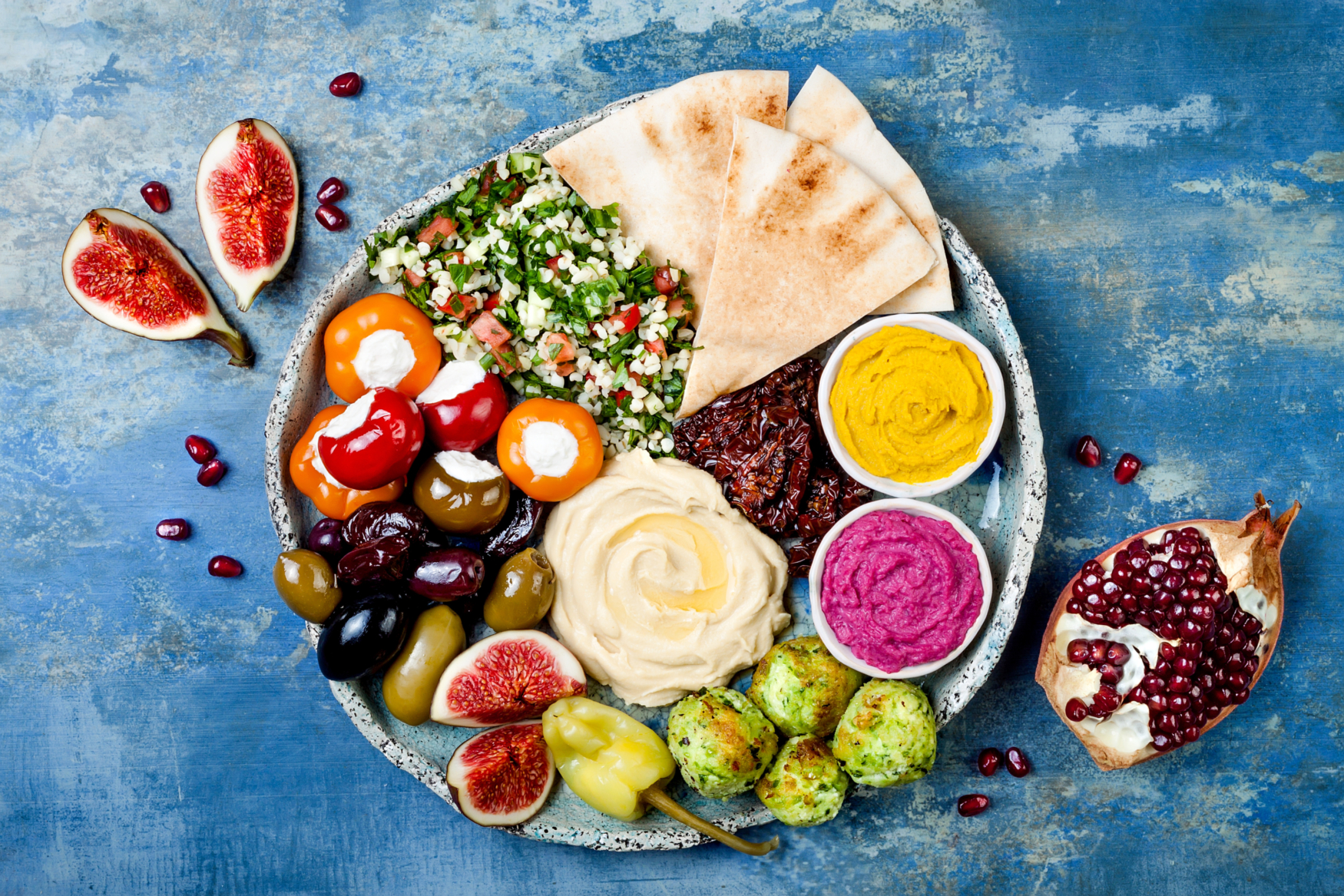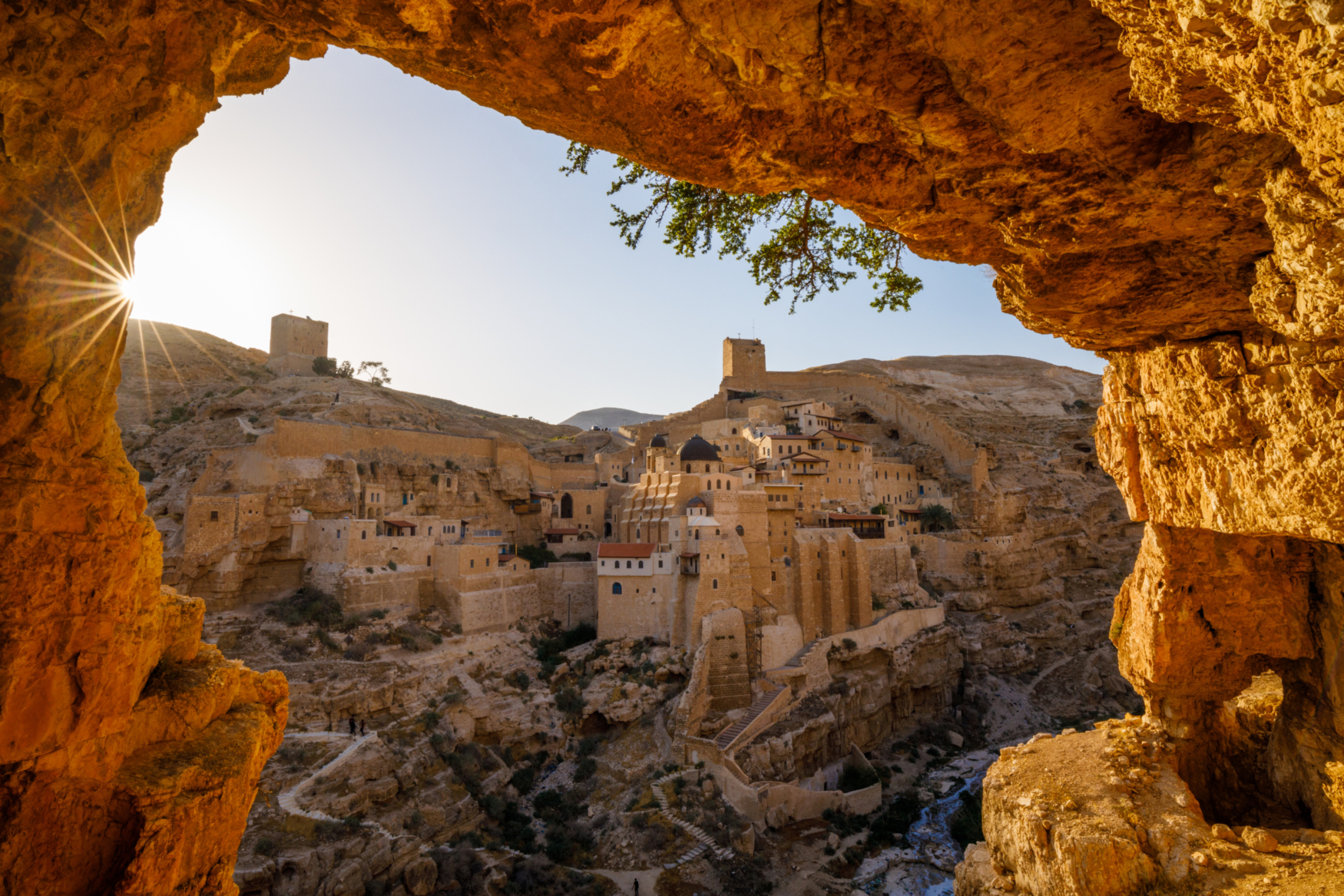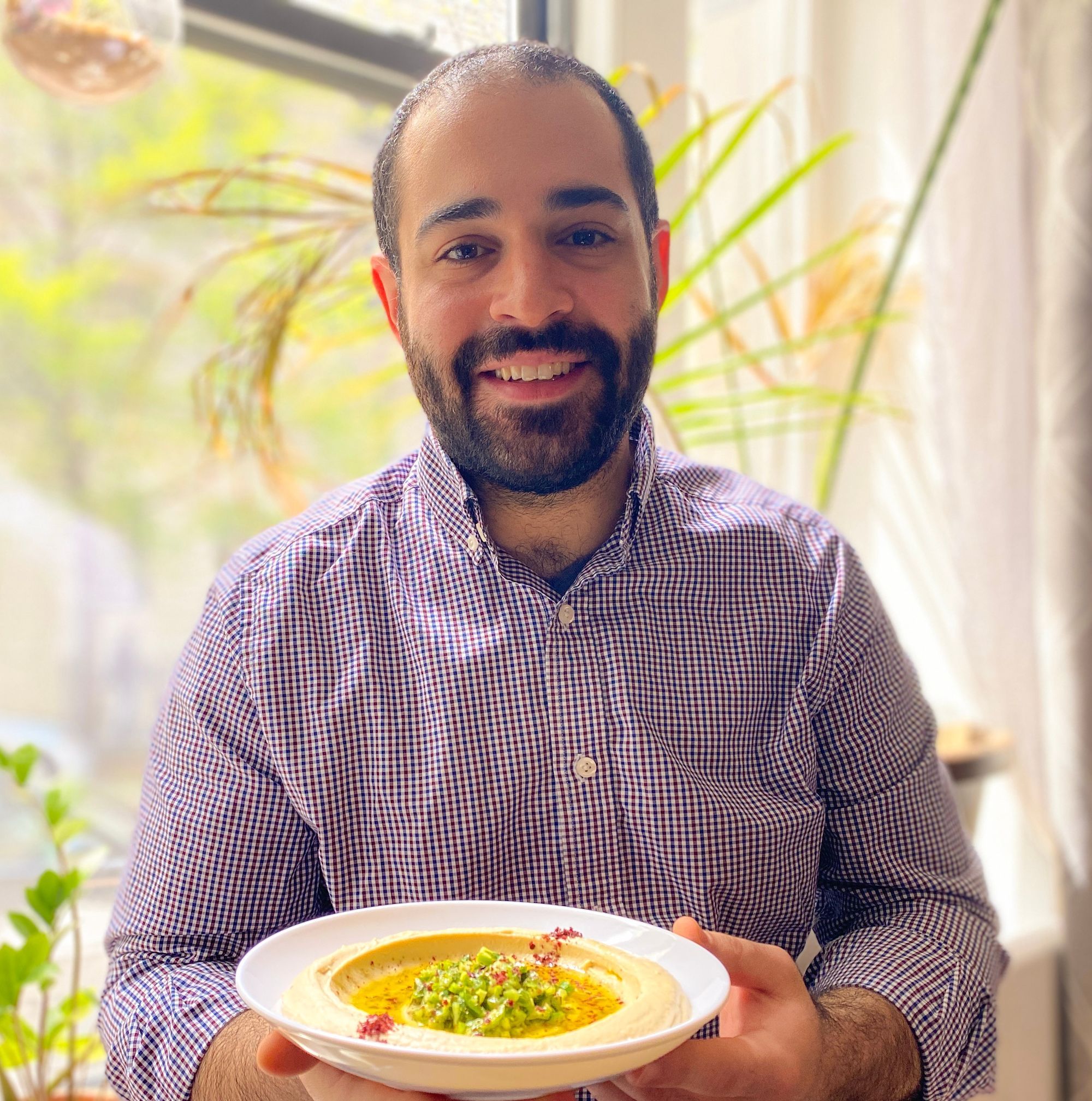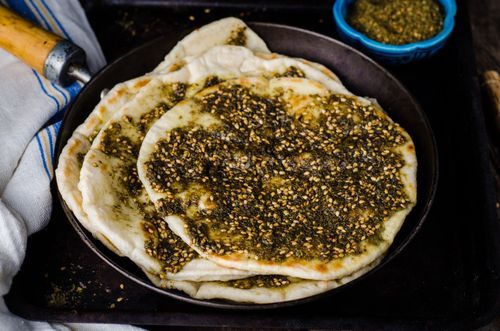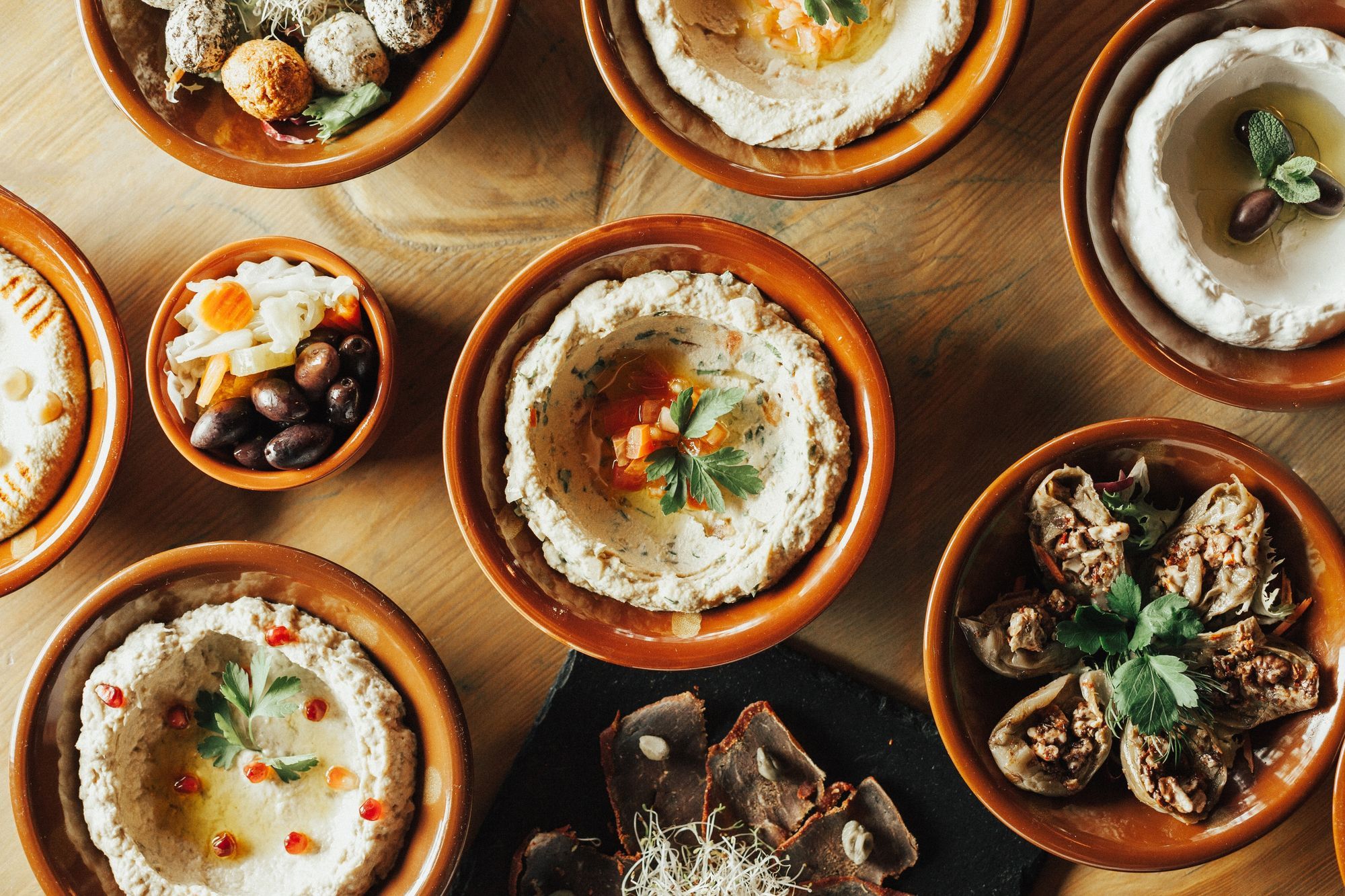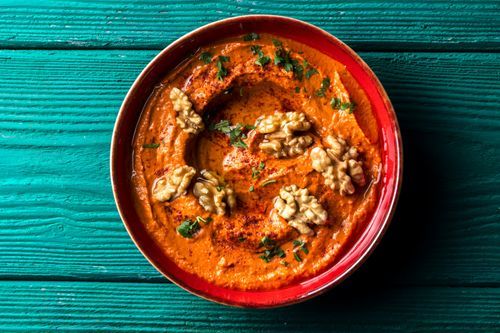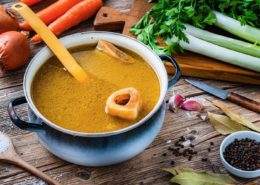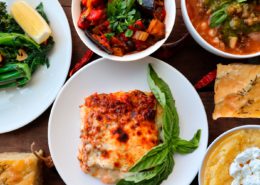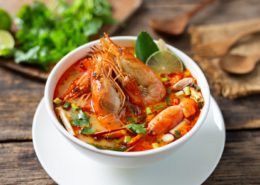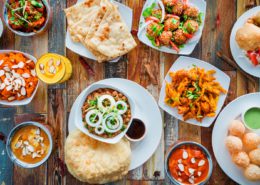Middle Eastern Cuisine
Traditional Food of the Middle East
Countries / States: Egypt, Iran, Turkey, Iraq, Saudi Arabia, Yemen, Syria, Jordan, United Arab Emirates, Israel, Lebanon, Palestine, Kuwait, Oman, Qatar, Bahrain, Cyprus, Akrotiri, and Dhekelia
The Middle East region, located at the intersection of Europe, Asia, and Africa, offers many distinct cuisines, each with a unique combination of influences. One characteristic that distinguishes most Middle Eastern cuisine is the abundance of highly aromatic and flavorful spices, including cumin, cardamom, nutmeg, sumac, and turmeric. These spices contribute to the color, fragrance, and flavors that are central to Middle Eastern cuisine.
List of Middle Eastern Cuisines
Top Middle Eastern Dishes
- Arabian
- Levantine
- Kurdish
- Egyptian
- Iranian
- Turkish
- Iraqi
- Yemeni
- Syrian
- Jordanian
- Israeli
- Lebanese
- Palestinian
- Kuwaiti
- Hummus
- Falafel
- Tabbouleh
- Pita
- Baba Ghanoush/ Moutabal
- Kibbeh
- Dolma
- Manakeesh aka manousheh
- Shish Kebab
- Kofta
- Fattoush
- Mandi
- Koshari
- Muhammara
- Labneh
- Molokhia
- Mujadara
“Never underestimate the power of good food. Eating delicious food can be a life-changing experience.” ~ Shon Mehta
About Middle Eastern Food
Middle Eastern cuisine relies heavily on olive oil, which is used as the primary source of fat used when cooking. This is one of the major reasons why Middle Eastern food is so healthy.
Sesame seeds are also an important ingredient in Middle Eastern cuisine. They’re used to make a paste called tahini, which contributes much of the flavor of well-known Middle Eastern dishes like hummus and baba ghanoush. Za’atar, a traditional spice blend used throughout the Middle East, also contains sesame seeds as a main component. Za’atar is traditionally made from mountain thyme, toasted sesame seeds, sumac, and sea salt. The dry spice mix is submerged in fresh olive oil and is commonly eaten with pita bread.
Middle Eastern countries that touch the Mediterranean sea, such as Turkey, Egypt, Lebanon, and Cyprus, tend to display stronger flavors than the countries farther east. These cuisines will use more lemon, garlic, olive oil, and sea salt in their dishes. Other common ingredients include grape leaves, chickpeas, olives, citrus, onions, eggplant, tomatoes, and fresh herbs like mint and parsley.
Middle Eastern cuisine is also defined by the concept of mezze. The word mezze comes from a Turkish word that means snack or appetizer. It’s an assortment of shared dishes, similar to the concept of Spanish tapas. For this reason, you’ll find a lot of dips and spreads or other appetizer-like foods as a core part of Middle Eastern food. When eating dinner in a Middle Eastern home, it’s typical to have a table full of mezze and piles of pita bread to dip into the various plates.
History of Middle Eastern Food
Today’s Middle Eastern region sits on top of ancient Mesopotamia, a land known as the Fertile Crescent. A number of huge civil advancements were made here, many of which have direct effects on the way people cook and eat today. This is where wheat and barley were first cultivated, resulting in a diet shift centered around grains like barley, bulgur (cracked wheat), and freekeh (smoked green wheat).
It was in Mesopotamia that we first saw fermentation, leading to the production of wine, yogurt, and leavened bread. It was also around this area that people first domesticated sheep, goats, and cattle. For these reasons, Mesopotamian cuisine is referred to as “the oldest cuisine in the world” and has a strong influence on modern Middle Eastern cuisines.
The Middle East was also the birthplace of three major world religions: Christianity, Judaism, and Islam. Because of the strong presence of Judaism and Islam in the region, lamb and mutton (goat) are the primary meats, and pork is essentially absent due to religious practices. Shellfish is also prohibited in a Kosher diet. A very traditional method of cooking meat is grilling on skewers or a spit, which is known as kebab or shawarma.
Modern Middle Eastern cuisine has also felt the effects of imperialization and colonization over many centuries. For hundreds of years, the Ottoman Empire controlled what today is Turkey, Greece, and the large majority of the Middle East region. Before that, the Persian Empire covered much of the same area. This vast area being under one rule for so long contributed to commonalities in Greek and Turkish food, as well as other Middle Eastern cuisines.
“The best way I can describe Middle Eastern cuisine is to say that it’s simple and balanced. It’s based on one main ingredient that you’re doing minimal things to to really make the most out of that flavor and maintain its integrity.”
On What Makes Middle Eastern Cuisines Unique
My mother is originally from Aleppo — a Syrian city located right along the ancient spice (or silk) road — home to the diverse blend of flavors and ingredients that traveled through it and became incorporated into its fabric. We call the food from our region “Levantine,” which refers to the Levant region of Syria, Cyprus, Lebanon, Palestine, and Jordan — a medina of Middle Eastern cuisine.
Growing up in New Jersey, my friends would say that all of our food tasted like Thanksgiving, and that is because it has a coziness to it. Our food uses warm spices, like cumin, allspice, and cinnamon. I use olive oil in every dish, garlic, sumac, and of course, the quintessential Levantine spice blend: za’atar.
We ask ourselves, “what dish can we create that makes the most out of this particular ingredient?” For example, hummus literally means “chickpea” in Arabic, but the name of the dish is really ḥummuṣ bi-ṭ-ṭaḥīna, which translates to “chickpea with tahini.” If done right, it should be a balance of the two, so that it’s not too heavy on either flavor. It’s the same story for muhammara, the best dish you can make with a red pepper — it’s all about doing just enough to manipulate the true flavor of the pepper. Middle Eastern cuisine focuses on maintaining the integrity of our ingredients.
The Middle Eastern Dinner Table
On the Syrian side and the Italian side, it’s a very similar feeling: family get-togethers involve a lot of food and a lot of sharing of food. Coming from my cultures, there’s kind of a joke that we share our food so much that people take it from us.
If I picture my family’s dinner table growing up and even to this day, there was always hummus, always olives, always a bread like pita or a manousheh, always olive oil, and always a bowl of za’atar. We dip the bread into the olive oil and then into the bowl of za’atar which makes it stick. My grandmother used to make large plates of kibbeh, dolma, and stuffed vegetables, enormous quantities of them, enough to feed an entire village.
Kibbeh is a dish that is very specific to Levantine culture. You can go back six thousand years to find the ancient Assyrians eating it as a way to stretch meat. Aleppo alone is known for having 32 varieties of kibbeh.
On What Sharing Middle Eastern Food With the Community on Shef Means
I do think it’s a beautiful thing to share bits of your cultural background through food. I like making our food more accessible to people who have never tried it before. It’s a way to learn about culture and history — it is both edible art and artifact.
I have a couple who order from me all the time, one is Jordanian and the other is Lebanese. They said they couldn’t find baked kibbeh anywhere, homemade the way I make it, and when they did on my menu, they were so excited. They raved about it in their reviews, they told all their friends about it. It has absolutely warmed my heart to see how much they love a dish that is so meaningful to me and to my own family, and to all those who call the Middle East home. It made them feel nostalgic and that’s the ultimate compliment for me.
Find Local Middle Eastern Food Shefs & Meals
When searching for “middle eastern cuisine near me”, you’ll find Shef delivers Middle Eastern food in the following locations:
- New York City
- New Jersey
- Seattle
- Los Angeles
- San Francisco (Bay Area)
- Chicago
Find your local home-cooked Middle Eastern food today!

